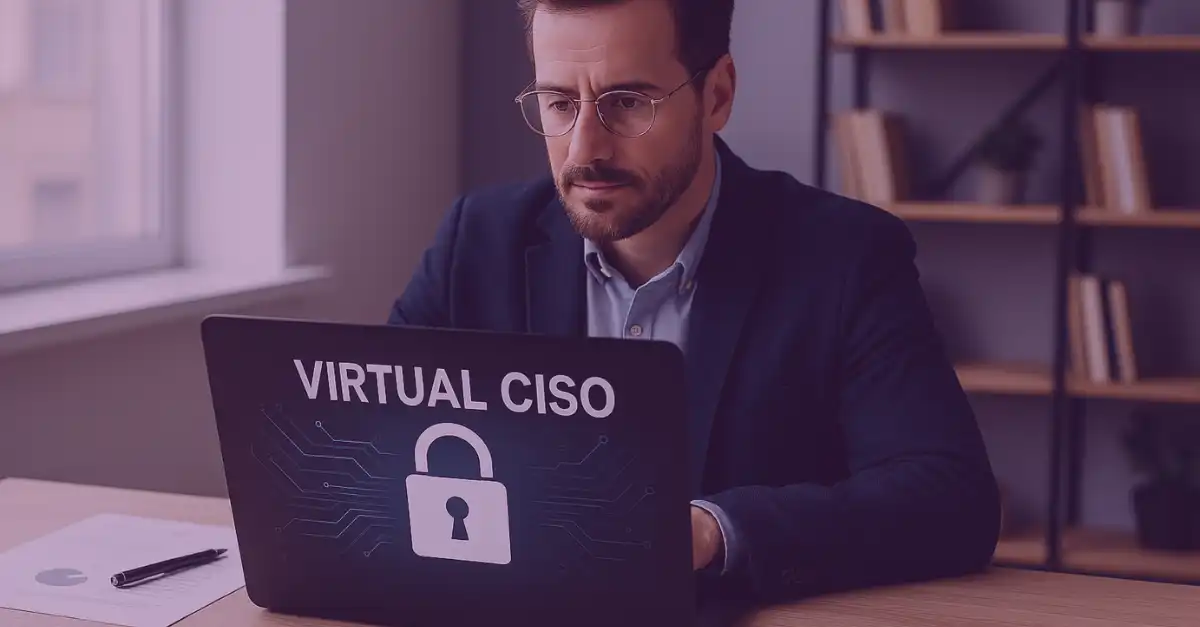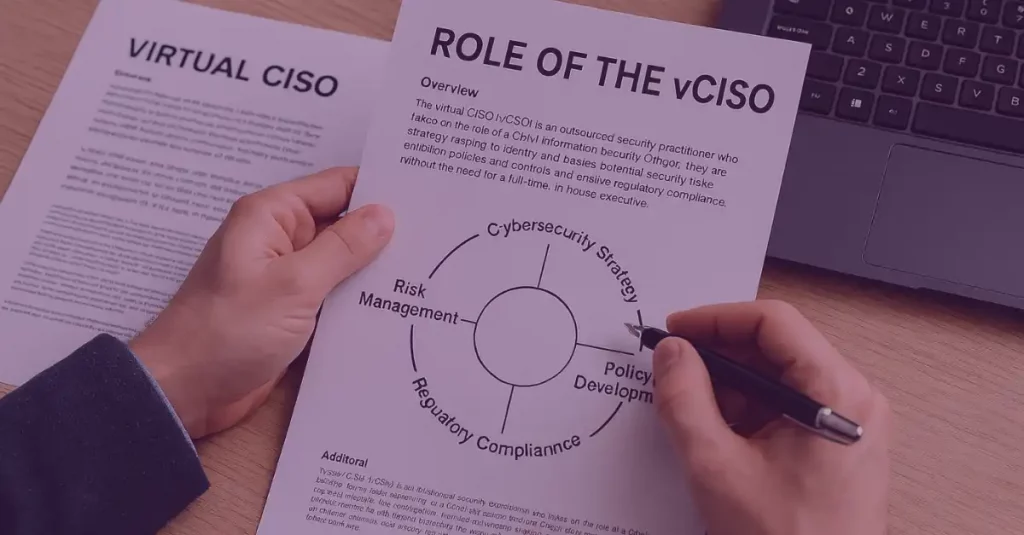
The vCISO model is not just a workaround, it’s a strategic lever for IT leaders who want to scale security, meet compliance, and drive results without the cost of a full-time hire.
In today’s threat landscape, cybersecurity has become a business-critical concern. For mid-sized businesses, hiring a full-time Chief Information Security Officer (CISO) may not be feasible but doing nothing is no longer an option. This is where the Virtual CISO (vCISO) model offers a powerful, flexible alternative.
What is a CISO?
A Chief Information Security Officer (CISO) is a senior executive responsible for overseeing an organisation’s information security strategy. Their role involves managing risks, aligning cybersecurity efforts with business goals, ensuring regulatory compliance, and responding to incidents.
However, full-time CISOs are often out of reach for small to mid-sized businesses due to high salary expectations and long recruitment cycles.
Definition and core responsabilities of a vCISO
A Virtual CISO (vCISO) is an outsourced cybersecurity expert who provides strategic leadership, risk management, and compliance oversight without the need for a full-time executive hire. Unlike consultants who focus on tactical tasks, a vCISO plays a leadership role tailored to your business’s needs.
Core responsibilities include:
- Aligning security with business objectives
- Implementing risk frameworks (ISO 27001, NIST, CIS Controls)
- Supporting regulatory compliance (GDPR, DPA 2018, NIS2)
- Leading incident response planning and testing
- Reporting to executives and boards
vCISOs typically work on a fractional basis (e.g. 10–30 hours/month), making them highly scalable and cost-effective.

How does a vCISO work?
vCISOs operate through flexible engagement models:
- Fractional vCISO: Ongoing, part-time strategic support
- Project-based vCISO: Short-term missions like audits or policy creation
- Interim vCISO: Temporary cover during transitions or recruitment
They work remotely or hybrid, integrate with your internal IT, and adapt to specific business needs, whether that’s achieving compliance, building a roadmap, or preparing for a cyber audit.
vCISO vs. Full-Time CISO: A strategic Comparison
Here’s how a vCISO compares to a traditional full-time CISO, across cost, speed, flexibility, and strategic fit.
Understanding how a vCISO differs from a traditional CISO is key to determining which model suits your organisation’s maturity, budget, and needs.
| Features | Virtual CISO | Full-Time CISO |
| Cost | £3K–£10K/month | £120K–£200K+/year |
| Onboarding speed | Immediate | 6–12 months |
| Flexibility | High (scalable) | Low (fixed contract) |
| Access to expertise | Broad, multi-sector | Limited to in-house |
| Ideal for | SMEs, interim needs | Large enterprises |
A vCISO is not a replacement for all situations, but it offers a strategic advantage for companies seeking expertise without the executive overhead.
Benefits of hiring a Virtual CISO
The benefits of hiring a Virtual CISO go well beyond reducing headcount costs. A vCISO offers a blend of strategy, flexibility, and proven cybersecurity leadership that few internal hires can match especially for small to mid-sized companies.
- Cost Efficiency: A vCISO provides up to 60% cost savings compared to hiring a permanent CISO, without compromising on the quality of leadership.
- Access to Top Talent: Most SMEs can’t compete for top-tier cybersecurity talent. A vCISO often brings decades of experience, including regulatory mastery and exposure across sectors.
- Compliance Readiness: From ISO 27001 to GDPR and NIS2, vCISOs accelerate your compliance journey, helping avoid penalties and pass audits.
- Faster Security Maturity: vCISOs focus on quick wins and long-term strategy. They help businesses improve their cybersecurity posture within months, not years.
- Objective, Unbiased Perspective: External by nature, a vCISO brings independence free from internal politics and vendor influence.
When to consider a vCISO?
Not every organisation needs a full-time security executive. Here are scenarios where a vCISO makes the most sense:
- You lack internal strategic security leadership
- You’re facing urgent compliance deadlines (e.g. NIS2, Cyber Essentials)
- You’re navigating M&A or VC due diligence
- You’re recruiting for a CISO but need interim support
- You’re scaling fast and security must keep up
How to successfully integrate a Virtual CISO into your organisation?
Bringing in a vCISO is straightforward, but it requires alignment with internal teams and priorities. Here’s how to make the most of this engagement:
- Step 1: Define your security priorities (compliance, risk, maturity)
- Step 2: Choose the right model (fractional, interim, project)
- Step 3: Assign an internal liaison (CTO, IT manager) to coordinate
- Step 4: Align on KPIs (e.g. risk score, compliance status, audit pass rates)
- Step 5: Track impact and iterate quarterly
Curious about how our vCISO service works in practice?
Discover our flexible vCISO offer, tailored to your organisation’s size, budget, and compliance goals.
👉 Visit our Vciso services page and our all in one “Infinite Security TM” services.
Is a vCISO right for your business?
Whether you’re in a growth phase, navigating change, or simply need clarity, a vCISO brings enterprise-grade leadership on demand.
Ready to discuss your specific security goals?
© Copyright 2025. Threatproof. All rights reserved.

